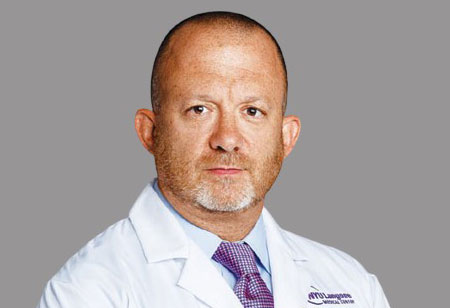

Thank you for Subscribing to Eldercare Review Weekly Brief

Paul Testa is the chief medical information officer at NYU Langone Health. In this capacity, he serves as the clinical informatics physician leader; stewards telemedicine initiatives; and shepherds programs in the areas of clinical quality, digital patient and clinician experience, predictive analytics, and informatics research. Testa works closely with physician and nursing informatics groups to transform and advance how NYULH delivers care via new technologies, which the NYU Langone continues to implement and optimize with innovative new health IT startups and established partners. His informatics team played a critical role in NYULH, earning the 2017 HIMSS Davies Award, in addition to the EMRAM Stage 7 designation for both inpatient and ambulatory. Most recently, he supported the launch of NYU Grossman School of Medicine’s AAMC accredited clinical informatics fellowship.
What Are The Current Technological Trends Or Challenges You Have Witnessed In The Healthcare Space? If we compare the ‘before’ and ‘now’ scenarios, the two and a half years of the pandemic have kindled two major healthcare sector trends. The first is around telehealth: even though patients like to see doctors in person, many patient-physician interactions have moved to the digital space. And patients and doctors are both now adept at using various aspects of telehealth, including video visits. The second trend is the increased demand for care-at-home or care beyond traditional locations. The acceptance of new technologies by patients as well as payers has led many healthcare systems to explore providing a hospital-like environment at patients’ homes through digital means. As care-at-home benefits are becoming apparent among patients and their families, more people are seeking remote treatment options. We can expect both the trends of telehealth and care-at-home to flourish in the coming months. These two trends also contribute to the popularity of remote patient monitoring (RPM) devices. Think of all the health trackers currently used for monitoring cardiac conditions, lung functions, and other physiological activities. By seamlessly connecting the physical and digital worlds, these RPM solutions not only improve telemedicine encounters - they improve office-based care delivery as well. The whole is greater than the sum of its parts when we bring together telemedicine, office visits, and RPM. Thus, it is no wonder that RPM technologies are now a key component of the patient-centric healthcare delivery model. What Are Your Opinions On The Popularity Of Telehealth? What Will The Future Of The Telehealth-Enabled Healthcare System Look Like? Along with the popularity and convenience of at-home care and telemedicine, the need for in-office care or hospital visits will not be completely replaced. Rather, what we will see is a healthcare system that draws on the advantages of all three care delivery models to better serve specific patient needs. The onus will be on the healthcare clinicians to ascertain the threshold at which they have to move between the various care delivery options. For instance, a simple diagnosis can be made over video conferencing; but a more advanced prognosis may require an in-person visit. Similarly, mildly acute health concerns may be managed with the at-home model, while severe health situations may require a hospital visit. So, we need to be able to properly distinguish at which points in the patient’s journey we may need to change the modality of care delivery.In the era of telehealth, we as clinicians are committing to building our mastery in leveraging different technologies that are being used to provide the best patient experience
I agree We use cookies on this website to enhance your user experience. By clicking any link on this page you are giving your consent for us to set cookies. More info